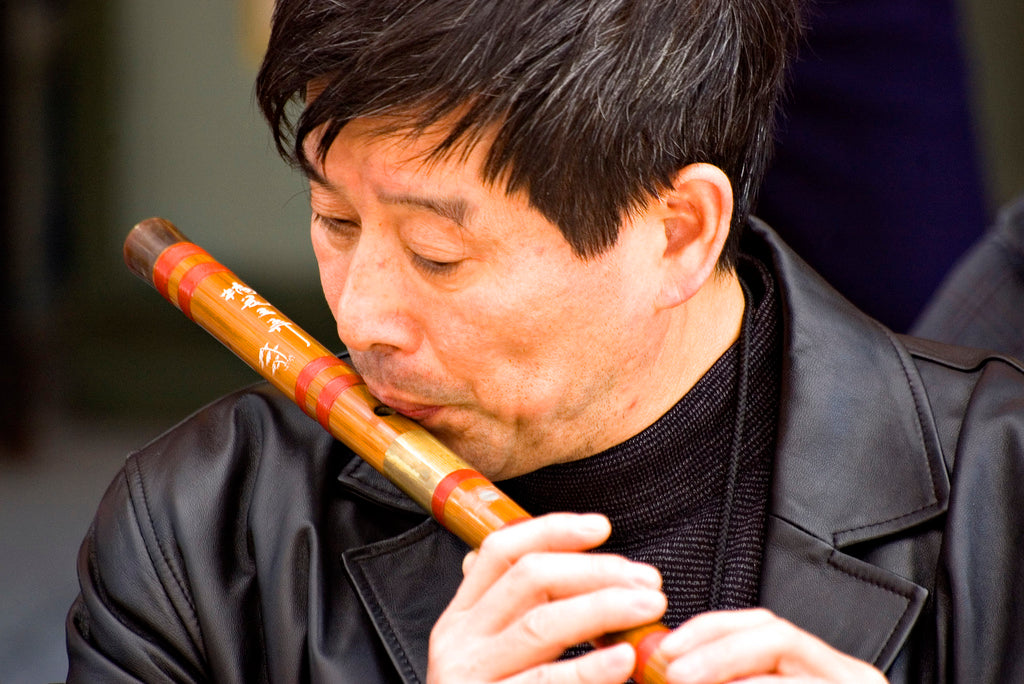Chinese Flutes
by David Brown
The Chinese have an ancient tradition of making and playing bamboo flutes. Although ocarina like vessel flutes, panpipes, and endblown flutes have been used extensively in China, the most common type of flute found in the Middle Kingdom is the transverse flute with what is known in the West as "simple system" fingering, with six fingerholes. Chinese flutes have also been made of other materials than bamboo, including jade, ivory, metal, and bone, but bamboo is by far the most typical.
Many of the flutes called Dizi (Ti in the older transliteration), like the ban di, etc. have an additional hole between the embouchure (mouth hole) and the first fingerhole, which is covered with a special membrane (di mo) to produce a buzzing, kazoo like element to the flute tone, adding a particular rich sound featured in Chinese flute playing. When this buzzing sound is not desired, this hole can simply be covered with cellophane tape and then the flute will make a clear basic flute tone. Our special quality bamboo flutes are also available without the di mo hole.
often the Chinese flute has some additonal holes at the open end, which function as tuning adjustments and a place to hang a tassel. Don't try to cover these holes with your fingers! only the basic six holes are fingered.
Chinese musicians most often name a flute from the note produced when all three left hand fingerholes are closed, and all three right hand fingerholes are open. Thus, a flute marked "C" by the 3rd hole will have a fundamental of G, and be equivalent to a Western fife or flute at G.
A flute marked "G" by the 3rd hole will have a fundamental of D, and be in Western terms a D flute. Rarely, a Chinese maker will have both pitches marked, say in this case "G by the 3rd hole, and "D" at the 6th fingerhole. Usually, though, only the 3rd hole name is marked.
Table of Equivalents:
|
Chinese Name |
Western Name |
For same flute size. |
|
(3rd hole) |
(6th hole) |
|
|
C |
G |
|
|
D |
A |
|
|
F |
C |
|
|
G |
D |
|
|
A |
E |
|
|
Bb |
F |
Chinese transverse flutes are rarely lower than Western G; for a low D (G in Chinese terms) flute one usually uses the xiao, an endblown flute. Thus a Chinese flute at the same pitch as an Irish flute in D (again G in Chinese terms) is very rare, almost non existant.
A Chinese professional flute player can play in many keys on the same flute, by appropriate half holing and careful embouchure control of pitch. Also, much use is made of rapid tonguing, flutter effects, pitch bends, bird imitations, and other special sounds in the solo music for Chinese flute.
Bamboo is a durable material, but occasionally a small crack may develop.... like if your buddy accidently sits on your flute! Not to worry, a small drop of high quality superglue (cyanoacrylate) will seal the crack and have the flute playing like new again. occasional oiling inside and out with sweet almond oil will help keep your flute in top condition and protect against moisture damage.

